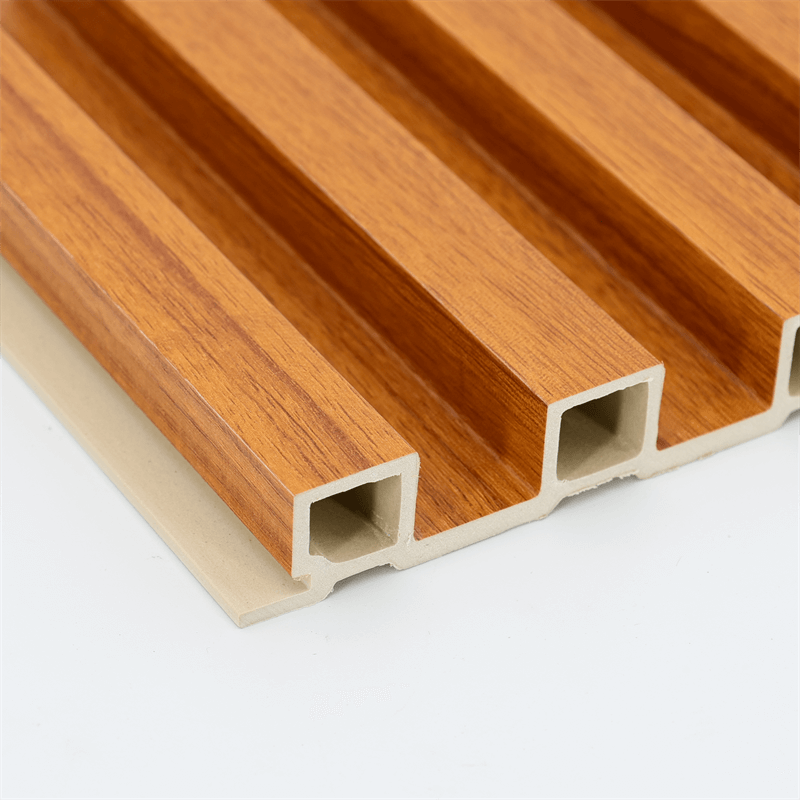In today’s world, energy efficiency and insulation have become crucial considerations in building construction.
WPC (Wood-Plastic Composite) wall panels offer a promising solution to enhance energy efficiency and insulation in buildings.
These panels not only provide aesthetic appeal but also contribute to reducing energy consumption and improving thermal insulation.
In this essay, we will explore the benefits of WPC wall panels in terms of energy efficiency and insulation.
We will discuss their thermal properties, their role in reducing energy consumption, their impact on creating comfortable indoor environments, and the long-term cost savings associated with their use.
I. Thermal Properties of WPC Wall Panels:
WPC wall panels possess excellent thermal properties that help regulate indoor temperatures.
The combination of wood fibers and thermoplastic polymers in their composition provides insulation benefits.
The panels have a low thermal conductivity, which means they do not easily transfer heat from one side to the other.
This property enables them to act as a barrier, preventing the transfer of heat from the exterior to the interior and vice versa.
The insulation properties of WPC wall panels help maintain a stable indoor temperature by reducing heat loss during colder seasons and minimizing heat gain during hotter seasons.
This thermal barrier contributes to energy efficiency by reducing the reliance on heating and cooling systems, thereby lowering energy consumption and associated costs.
II. Energy Efficiency Benefits:
WPC wall panels offer significant energy efficiency benefits, making them an excellent investment for building owners.
By providing improved insulation, these panels reduce the need for excessive heating or cooling to maintain comfortable indoor temperatures.
This results in reduced energy consumption and lower utility bills.
Moreover, the energy-saving qualities of WPC wall panels align with sustainable building practices and environmental conservation efforts.
By minimizing energy usage, buildings equipped with WPC wall panels contribute to reducing greenhouse gas emissions and the overall carbon footprint.
This not only benefits the environment but also demonstrates a commitment to sustainable and responsible building practices.
III. Creating Comfortable Indoor Environments:
In addition to energy efficiency, WPC wall panels play a vital role in creating comfortable indoor environments.
The insulation properties of these panels help prevent drafts and temperature fluctuations, ensuring a more consistent and pleasant indoor climate.
By reducing heat transfer, they also help to minimize cold spots or hot spots within a building, providing occupants with greater comfort and improved thermal satisfaction.
Furthermore, WPC wall panels can help control moisture levels within a building.
Their moisture-resistant properties prevent the absorption of water, which can lead to mold growth and compromised indoor air quality.
By maintaining a dry and healthy indoor environment, these panels contribute to the well-being of occupants.
IV. Long-term Cost Savings:
Investing in WPC wall panels for energy efficiency and insulation purposes can result in significant long-term cost savings.
While the upfront cost of installation may be higher compared to traditional wall materials, the energy savings and reduced maintenance requirements offset these initial expenses.
By reducing energy consumption, building owners can save on heating and cooling costs over the lifespan of the building.
Additionally, the durable nature of WPC wall panels minimizes the need for frequent replacements or repairs, further reducing long-term maintenance expenses.
The panels are resistant to warping, cracking, and fading, ensuring their longevity and minimizing the need for costly repairs or replacements.
WPC wall panels provide an effective and efficient solution for enhancing energy efficiency and insulation in buildings.
Their thermal properties, energy-saving benefits, contribution to comfortable indoor environments, and long-term cost savings make them a wise investment for building owners.
By incorporating WPC wall panels, buildings can achieve improved insulation, reduced energy consumption, and increased thermal comfort for occupants.

These panels contribute to a more sustainable and environmentally friendly approach to building construction, aligning with the global efforts to reduce energy consumption and mitigate climate change.
Overall, WPC wall panels offer a practical and cost-effective means to enhance energy efficiency and insulation in buildings.
Their thermal properties, energy-saving benefits, and long-term cost savings position them as a valuable investment in creating sustainable and comfortable indoor environments.
With their aesthetic appeal, durability, and contribution to energy efficiency, WPC wall panels are an ideal choice for modern architecture.
In conclusion, WPC wall panels offer a range of advantages when it comes to energy efficiency and insulation in building construction.
Their thermal properties and ability to minimize heat transfer make them an effective solution for maintaining stable indoor temperatures, reducing energy consumption, and lowering utility costs.
Additionally, these panels contribute to creating comfortable indoor environments by preventing drafts, minimizing temperature fluctuations, and controlling moisture levels.
Furthermore, investing in WPC wall panels brings long-term cost savings.
While the initial installation costs may be higher compared to traditional wall materials, the energy savings and reduced maintenance requirements over the lifespan of the building outweigh the upfront expenses.
The durability and resistance of WPC wall panels to various environmental factors ensure their longevity, minimizing the need for frequent repairs or replacements.
By incorporating WPC wall panels, building owners can demonstrate their commitment to sustainable building practices, energy conservation, and environmental stewardship.
These panels contribute to reducing greenhouse gas emissions and the overall carbon footprint of buildings, making them an eco-friendly choice for modern architecture.
In conclusion, WPC wall panels provide a practical, cost-effective, and sustainable solution for enhancing energy efficiency and insulation in buildings.
Their benefits extend beyond aesthetics, offering long-term energy savings, improved thermal comfort, and reduced environmental impact.
By incorporating WPC wall panels into construction projects, building owners can create efficient, comfortable, and environmentally conscious spaces that stand the test of time.


